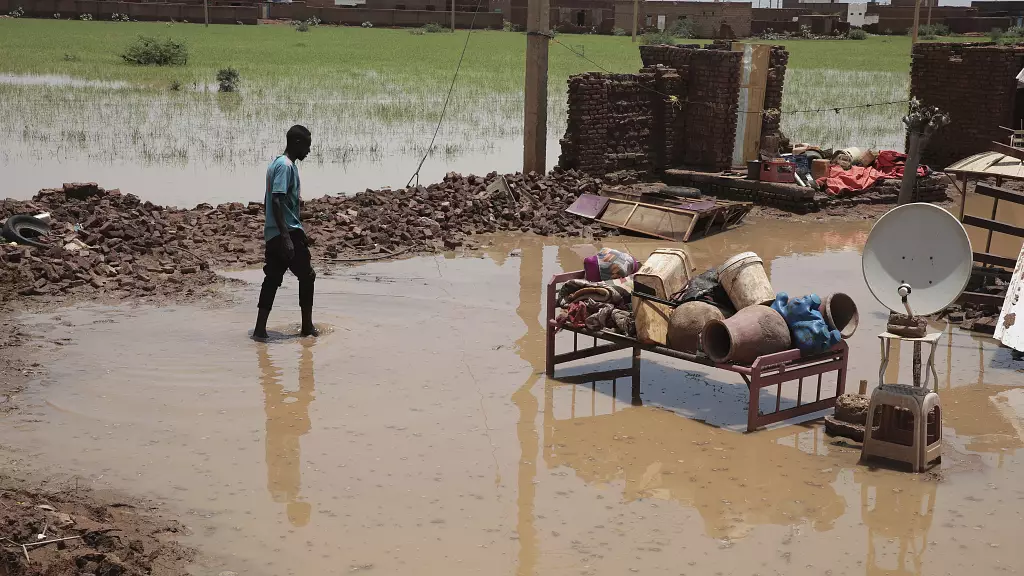Sydney-based think tank Institute for Economics and Peace (IEP), published on Wednesday (Oct 19) the newest edition of its Ecological Threat Report (ETR).

Evaluating which nations are most in danger from struggle, common turmoil and removal brought about by biological debasement, the report observed that nations in Africa were especially powerless.
Projections to 2050 show that quite a bit of sub-Saharan Africa will be unreasonable. The fundamental variables representing this impracticality are: elevated degrees of air contamination, unfortunate disinfection, high murder rates and significant natural dangers joined with high populace development.
The 77-page report features 27 ‘area of interest’ nations, which face the most horrendously terrible biological dangers and have the least cultural flexibility. 23 of the 27 are in sub-Saharan Africa and MENA.
Food stress
41 nations are right now confronting serious food frailty, affecting monetary turn of events, general wellbeing, and social congruity. 830 million individuals living in these nations are in danger, with 89% dwelling in sub-Saharan-Africa, trailed by MENA with 49 million.
As indicated by the World wellbeing association, individuals confronting serious food frailty have run out of food and gone per day or more without eating.
The degree of undernourishment is likewise troubling. The quantity of individuals impacted has expanded by 35% in 2021 to more than 750 million individuals. Undernutrition is an unhealthiness condition. It incorporates squandering (low weight-for-level), hindering (low level for-age) and underweight (low weight-for-age).
Undernutrition is supposed to break down because of expanding environmental debasement, rising expansion, and the Russia-Ukraine war.
Also, over 1.4 billion individuals across 83 nations currently face outrageous water pressure, with the greater part of these nations situated in Africa.
Cataclysmic events and mass relocation
Sub-Saharan Africa is the subsequent district most influenced by cataclysmic events.
With cataclysmic events turning out to be more continuous, networks will battle to recuperate before the following one happens. As it has proactively been noticed, environment related catastrophes frequently lead to constrained mass relocation.
In 2021, nations that accomplished the most elevated inside relocations from struggle and cataclysmic events included Syria, Ethiopia, The Popularity based Republic of Congo, Afghanistan, and South Sudan.
Asia-Pacific is the primary area the most impacted by cataclysmic events. Focal America and the Caribbean are other especially impacted districts. The most recent multi-organization report on environment uncovered that the quantity of climate, environment and water related catastrophes has expanded by a variable of five throughout the course of recent years.
Environment concern
Districts presented with the most significant levels of biological danger are normal the most un-worried about environmental change, with sub-Saharan Africa and South Asia positioning conflict, psychological oppression, wrongdoing, savagery, and jobs as of more prominent concern.
Starting around 2019 the world has become less worried about environmental change, dropping by 1.5% to 48.7%.
Numerous African nations are depending on the 27th meeting of the UN Environmental Change Gathering will be set to start off in early November in Sharm el—Sheik to handle environmental treachery.
Steve Killelea, the organizer and leader director of the Establishment for Financial matters and Harmony (IEP) likewise sees this occasion as an opportunity to hold onto to achieve changes.
“As we approach COP27, this report is an opportune update that the expenses of a considerable lot of the current biological difficulties may be intensified by environmental change”, he said.
“The world’s ongoing way to deal with the nations experiencing the most terrible environment-related issues isn’t working; biological dangers are expanding and have foundational causes that require fundamental arrangements”, Killelea argued.
The IEP chief administrator asked “states and global offices” to “put resources into building long haul strength to turn away future biological annihilation, constrained movement, and struggle.”
Steve Killelea likewise advancement programs uphold SMEs: “Formative projects ought to zero in on miniature endeavors which catch water, further develop farming and on esteem added producing. This will work on the existences of individuals who are experiencing the most.”
Low adapting limits in megacities
There are at present 33 megacities, with 2 situated on the mainland: Lagos (Nigeria) and Kinshasa (DRC).
14 urban communities are supposed to become megacities by 2050 with 4 African urban communities joining the gathering.
In particular, (Dar es Salaam (Tanzania), Nairobi (Kenya), Khartoum (Sudan), and Luanda (Angola). These exceptionally enormous urban areas with in excess of 10 million occupants will confront difficulties as time elapses.
More than 60% of current megacities are in low-harmony nations. They have the most elevated populace development rates, least fortunate disinfection, more significant levels of unimportant and coordinated wrongdoing, and significant environmental dangers (for example inescapable air contamination).
Notwithstanding, to adapt to these difficulties the vast majority of the more unfortunate megacities “come up short on monetary limit and administration”, the report found.
On the landmass, Kinshasa, Nairobi, and Lagos are probably going to confront the most extreme difficulties.
Dar es Salaam and Nairobi, are anticipated to develop their populace by over 100 percent in the following 30 years while Kinshasa, Lagos, and Khartoum are probably going to build their populace by over 80%.
Their high populace development combined with no satisfactory system to address existing difficulties features a “problematic relationship with unreasonableness”. With low adapting limits, they “will battle to oversee environmental dangers.”